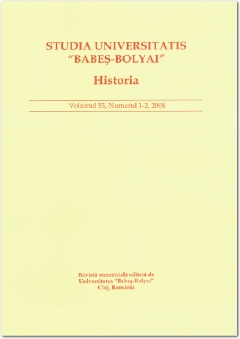Communism “under construction”, Case Study – Maramures 1945-1965
Communism “under construction”, Case Study – Maramures 1945-1965
Author(s): Dorina OrzacSubject(s): History
Published by: Studia Universitatis Babes-Bolyai
Keywords: Communism; Romania; Maramures; cadres; evolution of the social structure of the RCP.
Summary/Abstract: The present paper aims to be an interdisciplinary approach to a spatially and temporarily strictly delimited space, the Maramures region. The paper is based on a twofold analysis: The political and institutional dimension: a. Where the historic and ethnic records of this region are viewed as a significant element of the periphery and of the manner the hierarchical and the territorial structures were developed after 1945, b. Where the new organization of the local political structures represented the basis of the human resources policy, The social and human dimension: how the Party proceeded to recruiting, selecting and promoting the human resources, in order to “fill in” the newly developed institutions with people entirely committed to Party and its mission. The choice for a space territorially restricted to Maramures diminishes neither the complexity of the methodological approach nor of the scientific one. In addition, it gives a global and unitary perspective upon the whole phenomenon, the possibility of a theoretical and practical applicability of the already analyzed concepts. But the aim is not to prove the utility, the relevance or the correctness of a paradigm. What we aim at is the understanding of a functioning mechanism, of the defining elements of a political construct inwardly coerced, without any local relevance, and against which there were serious reserves. The questions asked throughout this study “How was the Communist regime locally built, implemented and structured?”, “Who did it?” “For who?” led us to a strange situation, that of having simple answers, as they had already been substantiated by the historiography of the Cold War (through deeds of the Party structures, by the Party leaders, and by the change of the social structure, opponents destruction and country modernization). But if we look at the local community, the answer to these questions is not as simple as we expected. It does not imply only the thorough knowledge it was applied, but also the motivations behind. In fact, it is based on these questions that the Communist regime decided to shape, transform and change the local communities in accordance with the central authorities' projects.
Journal: Studia Universitatis Babes-Bolyai - Historia
- Issue Year: 52/2007
- Issue No: 1-2
- Page Range: 1-37
- Page Count: 37
- Language: English

